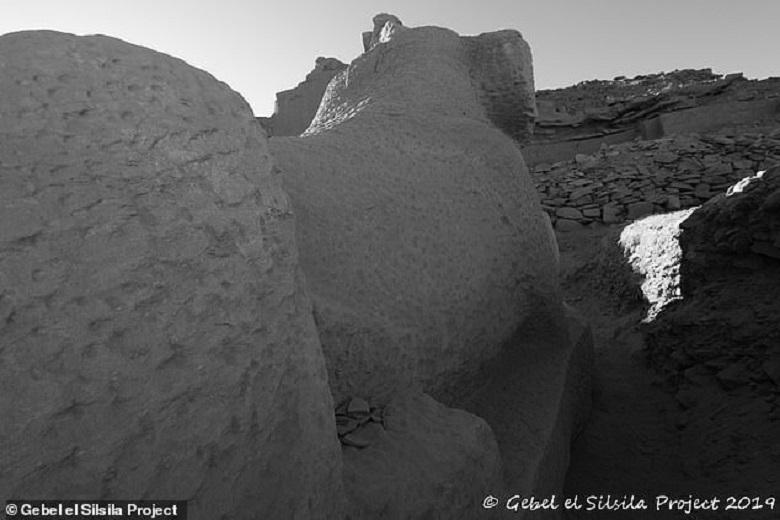Egypt’s archaeological wealth seems to be endless. This time, scientists have discovered a 3,000 years stone carving workshop, which contains several unfinished sculptures. Among them, the ram-headed sphinx carved out of sandstone stands out. Scientists believe that this workshop dates back to the time of the 18th dynasty, i.e. during the reign of Amenhotep III, the grandfather of the famous Tutankhamun.
An unusual statue of a sphinx with a height of 3.5 meters was found in Gebel el-Silsila, and archaeologists believe that Pharaoh Amenhotep III ordered it. Still, for some reason, it was forgotten for more than three millennia. The sphinx was found during excavations under a couple of meters of debris, from under which only the head of the sculpture was initially visible.
After examination, it turned out that the statue was carved in the style of ram-headed sphinxes, installed in front of the famous Khonsu temple in the vast Karnak complex. Nearby, archaeologists have also unearthed hundreds of stone fragments with hieroglyphs and exquisite cobra carvings.
The Gebel el Silsila site, which lies on the Nile banks, was once a quarry, but recent excavations have shown that quarry workers and their families also lived there.
The Egypt Today newspaper recently reported that archaeologists are now working to raise the mysterious statue. Due to its location, the problem is that the sphinx cannot be easily reached the surface. “During the excavation of the sphinx next to its belly, the team found a smaller fragment of another sphinx, possibly carved by an apprentice,” the archaeologists explain on their blog. “Both sculptures were rough and ready for transport, but they were probably left in Gebel el Silsila as the large sculpture was broken.” A stone “Ureus” or spiral cobra was found next to the smaller piece. Experts point out that this small sculpture was supposed to crown the head of a larger sphinx later.
So, finding the mysterious statue in the quarry could mean it was a cancelled order. Facts indicate that the sphinx was carved at the end of the reign of Pharaoh Tut’s grandfather. After the death of Pharaoh Amenhotep III, the sculptures that he ordered during his lifetime could well have been abandoned.
In addition to the broken carved cobra, which was a symbol of royal power, a “little sphinx” was buried next to a giant statue for millennia, which, as scientists assume, a student could have carved for practice. Around both figures, there are tiny iron shavings from chisels and excellent sandstone chips left by artisans who worked 3370 years ago. Both sphinxes were completely covered with debris from the quarry, which continued to work during the Roman era.
The Gebel el Silsila excavation is a joint Swedish-Egyptian project led by Dr Maria Nilsson and John Ward of the Lund University of Sweden. Scientists work under the leadership of the Supreme Council for Antiquities of Egypt and the Aswan and Nubian inspections.
The massive sphinx would have been carved from a 10-ton block of sandstone, Ward said. Scientists point out that there is no apparent reason why the sphinx was abandoned in the quarry. Of course, it has a thin crack along the front, but the damage was unlikely to have been severe enough to destroy such a giant statue. Therefore, it was suggested that the reason was that when Amenhotep III died, and his son took the throne, all projects of the old pharaoh were frozen. What happened to the sphinx? Hardly anyone will already know.
